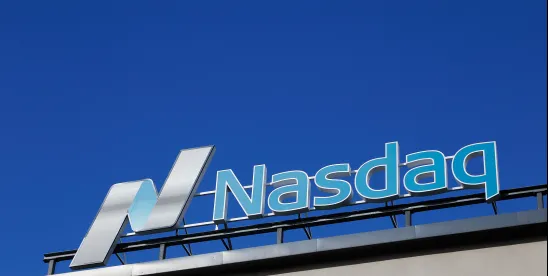In 2025, 145 companies have effectuated reverse stock splits. Both companies listed on Nasdaq and on the New York Stock Exchange (“NYSE”) often conduct reverse stock splits to comply with each exchange’s minimum share price requirement of US $1.00. A reverse stock split reduces a company’s outstanding shares while proportionally increasing the share price.
In recent years, Nasdaq has introduced a series of rule changes that make it more challenging for companies to effectuate reverse stock splits to maintain compliance with Nasdaq’s minimum bid price requirement. Furthermore, effective as of April 2025, Nasdaq revised its initial listing requirements such that companies conducting an initial public offering with a subsequent listing to Nasdaq must raise more capital than previously required during times of economic uncertainty and stock market volatility.
Below are the various rule changes companies need to keep in mind when deciding to go public as well as what companies need to know to stay public.
How many companies have been delisted from Nasdaq and the NYSE in 2025?
As of April 21, 2025, there have been an aggregate of 121 delistings from Nasdaq and NYSE.
As of April 21, 2025, 158 companies have received bid price deficiency notices from Nasdaq.
Why are companies being delisted from Nasdaq and the NYSE?
Delistings have mainly been the result of the failure to meet: minimum bid price requirements, market capitalization requirements and shareholders equity requirements. Some delistings are also attributed to mergers.
What triggers Nasdaq to send a bid price deficiency notice?
If a company trades for 30 consecutive business days below the $1.00 minimum closing bid price requirement, Nasdaq will send a deficiency notice to the company.
How can a company regain compliance with the Nasdaq minimum bid price requirement?
In order to regain compliance with the minimum bid price requirement, a security must have a closing bid price of $1.00 or more for 10 consecutive business days.
Under certain circumstances, to ensure that a company can sustain long-term compliance, Nasdaq may require the closing bid price to equal or to exceed the $1.00 minimum bid price requirement for more than 10 consecutive business days before determining that a company is in compliance with the bid price requirement. In determining whether to look beyond the 10 consecutive business days for compliance, Nasdaq will consider factors including, but not limited to: (i) margin of compliance (the amount by which the price is above the $1.00 minimum standard); trading volume (a lack of trading volume may indicate a lack of bona fide market interest in the security at the posted bid price); (iii) the market maker montage (e.g., if only one of eight market makers is quoting at or above the minimum bid price and the quote is only for 100 shares, then added scrutiny may be appropriate); and (iv) the trend of the stock price (e.g. is it moving up or down?).
Notwithstanding the foregoing, a company will not be considered to have regained compliance with the bid price requirement if the company takes an action to achieve compliance and that action results in the company’s security falling below the numeric threshold for another listing requirement without regard to any compliance periods otherwise available for that other listing requirement. For example, if a company effectuates a reverse stock split and regains compliance with the bid price requirement but, as a result of the reverse stock split, falls out of compliance with the publicly held shares requirement, the company will continue to be considered non-compliant until both: (i) the other deficiency is cured (e.g. the publicly held shares requirement) and (ii) thereafter the company meets the bid price standard for a minimum of 10 consecutive business days, unless Staff exercises its discretion to extend such 10 day period as discussed above. Additional compliance periods are no longer available as they otherwise would have been for secondary deficiencies prior Nasdaq’s recent rule change. If a company does not regain compliance with the bid price requirement and the additional deficiency during the initial compliance period applicable to the bid price requirement noncompliance, Nasdaq will issue a Staff Delisting Determination Letter.
How long does a company have to regain compliance with the Nasdaq bid price deficiency if it has neither (i) effectuated a reverse stock split in the prior 12 months or (ii) effected one or more reverse stock splits over the prior two-year period with a cumulative ratio of 250 shares or more to one?
If a company trades for 30 consecutive business days below the $1.00 minimum closing bid price requirement, Nasdaq will send a deficiency notice to the company,advising that it has been afforded a “compliance period” of 180 calendar days to regain compliance with the applicable requirements.
Is a company eligible to request Nasdaq grant it a second 180-day compliance period?
Companies Listed on The Nasdaq Capital Market
If a company listed on The Nasdaq Capital Market does not regain compliance with the bid price requirement during the initial 180 day compliance period it may be eligible for a second 180-day compliance period if it meets the market value of publicly held shares requirement for continued listing and all other requirements for maintaining its listing The Nasdaq Capital Market (except for the bid price requirement) and provides Nasdaq with written notice that it intends to regain compliance with the bid price requirement during the second 180-day compliance period by effecting a reverse stock split, if necessary.
Companies Listed on The Nasdaq Global Select Market or The Nasdaq Global Market
If a company listed on The Nasdaq Global Select Market or Global Market is unable to comply with the bid price requirement prior to the expiration of its initial 180-day compliance period, it may transfer to The Nasdaq Capital Market to take advantage of the additional 180-day compliance period offered to securities traded on The Nasdaq Capital Market. Such a company must meet the $1 million market value of publicly held shares requirement for continued listing, and all other requirements for initial listing on Thee Nasdaq Capital Market (except for the bid price requirement) and provide written notice to Nasdaq that it intends to regain compliance with the bid price requirement during the second 180-day compliance period by effecting a reverse stock split, if necessary.
If a company does not provide written notice of its intent to cure the deficiency, or if it does not appear to Nasdaq that it is possible for the company to cure the deficiency, the company will not be eligible for the second compliance period.
If a company has either (i) effectuated a reverse stock split in the prior 12 months or (ii) effected one or more reverse stock splits over the prior two-year period with a cumulative ratio of 250 shares or more to one is it eligible for a 180-day compliance period to regain compliance with Nasdaq’s bid price requirement?
No. If a company has effected a reverse stock split within one year of non-compliance or has effected one or more reverse stock splits over the prior two-year period with a cumulative ratio of 250 shares or more to one, then the company will not be eligible for a 180-day compliance period and the Nasdaq Listing Qualifications Department shall issue a Staff Delisting Determination.
How does Nasdaq calculate whether a company has effectuated reverse stock splits with a cumulative ratio of 250 shares or more during the prior two-year period?
Nasdaq calculates the cumulative ratio of reverse stock splits by multiplying the split ratios. For example, if a company effectuates a 1-for-5 split and a 1-for-10 split in the prior two years, Nasdaq would multiply 5 x 10 such that the cumulative ratio would be 50.
What happens if a company’s price falls to $0.10 or less during the compliance period?
If, during the compliance period, the closing bid price falls to $0.10 or less for ten consecutive trading days, the Nasdaq Listing Qualification Department will issue a Staff Delisting Determination with respect to the security.
What happens if a company fails to regain compliance with the bid price requirement following the expiration of the applicable compliance period?
A company that fails to regain compliance with the bid price requirement following the expiration of the applicable compliance period will be issued a delisting letter and will have its securities suspended from trading on the Nasdaq Stock Market, effective on the 7th calendar day following receipt of Staff’s delist determination. The company may still appeal Staff’s determination which will stay the delisting, but the company’s securities will remain suspended from trading on Nasdaq through the duration of the Hearings Process.
Does a company require stockholder approval prior to effectuating a reverse stock split?
Delaware
Yes, stockholder approval is required to effectuate a reverse stock split. If a company is listed on a national securities exchange such as Nasdaq or the NYSE and the company will continue to meet exchange listing requirements after the reverse stock split, a company may effectuate a reverse stock split if it obtains approval of such split from a majority of the votes cast at a stockholder meeting.
Nevada
Stockholder approval is not required if a company effectuates a reverse stock split of its outstanding shares simultaneously with a proportional reverse stock split of its authorized shares.
Stockholder approval is required if a company effectuates a reverse stock split of its outstanding shares but does not proportionately adjust its authorized shares. Pursuant to Nevada law, a publicly traded corporation may effectuate a reverse stock split if it obtains approval of such split from its stockholders based upon the voting threshold set forth in its charter documents (i.e. either a majority of the voting capital outstanding or a majority of the votes cast).
What other new rules has Nasdaq recently implemented?
Effective as of April 11, 2025, companies seeking to list on The Nasdaq Capital Market or The Nasdaq Global Market in connection with an initial public offering must satisfy the applicable minimum Market Value of Unrestricted Publicly Held Shares (“MVUPHS”) requirement of the Nasdaq Listing Rules solely from the proceeds of the initial public offering. This prevents companies from using shares held by existing non-insider stockholders and offered for resale to meet the public float requirement of Nasdaq’s initial listing standard.
The foregoing rule with respect to MVUPHS does not apply to (i) companies seeking to uplist their securities from the over-the-counter markets (OTC Markets) to Nasdaq and (ii) foreign issuers.
What new rules has NYSE implemented?
As of July 2024, NYSE American no longer accepts applications for initial public offerings unless the gross proceeds from the initial public offering are at least $10 million.



 />i
/>i
